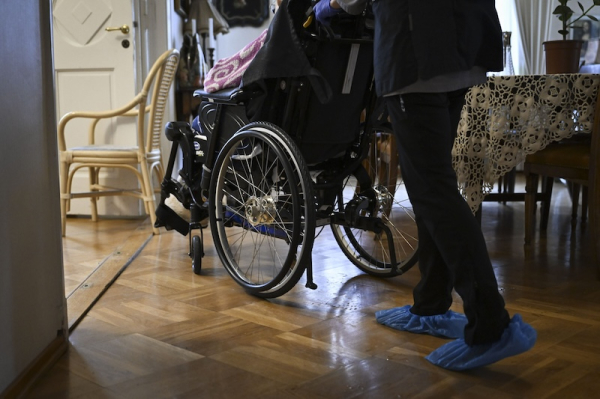
A home care worker assists a client at their home in Helsinki. Photo: Emmi Korhonen / Lehtikuva
- Next Article Government targets influencer tax schemes with ‘massimuija clause’
Finnish pension funds delivered strong investment results in 2024, ranking among the most successful in an international comparison compiled by the Finnish Centre for Pensions.
The study covered 24 major pension investors from nine countries. Average real returns exceeded long-term figures, with nominal returns averaging 9.5 percent and real returns reaching 8 percent across all participants.
“Despite trade tensions that unsettled markets, many pension investors had an exceptionally good year,” said Mika Vidlund, Liaison Manager at the Finnish Centre for Pensions.
Among regulated investors, Finnish pension companies secured all top positions. Varma led the category with a real return above 9 percent, followed by Ilmarinen, Elo and Veritas, all returning just under 8 percent. Swedish and Danish firms AMF, Alecta, IP and ATP followed behind.
The strong showing was attributed to a shift in portfolio strategy. “Investing abroad paid off last year as the Helsinki Stock Exchange underperformed,” said Antti Mielonen, Special Adviser at the Finnish Centre for Pensions. Finnish investors increased foreign equity holdings and reduced domestic stock exposure.
Among buffer funds, Norway’s SPU achieved the highest return with 20 percent, boosted by investments in US tech companies and a weakening krone. South Korea’s National Pension Service followed with nearly 13 percent. Finnish buffer fund Keva returned 9.6 percent and VER 8.2 percent.
“Keva outperformed even Swedish buffer funds,” Mielonen noted.
Over the long term, returns remained strong. Between 2010 and 2024, average real returns reached 5 percent. The Seafarers’ Pension Fund (MEK) had the best 15-year record among Finnish funds at 4.8 percent. Keva and the Church Pension Fund (KER) both posted 4.4 percent.
A new reform agreed in January allows Finnish private pension companies to raise their equity allocation limit from 65 to 85 percent. This would give Finland one of the highest caps among global pension systems. Norway’s SPU, for example, is limited to 72 percent.
“A higher limit helps avoid forced sales during equity surges,” Vidlund said. At the start of the year, equities accounted for just over half of Finnish pension investments. Bonds made up just over 20 percent.
The Finnish Centre for Pensions’ comparison separates pension investors into regulated and buffer fund categories. Regulated investors face strict solvency rules, limiting their risk-taking ability. Buffer funds, such as those in Sweden, Norway and Canada, operate under separate frameworks.
Returns are reported in national currencies to reflect the same currency used for pension payments. Real returns account for inflation and provide a clearer view of long-term performance.
HT
- Next Article Government targets influencer tax schemes with ‘massimuija clause’
Source: www.helsinkitimes.fi
